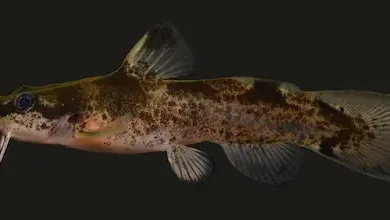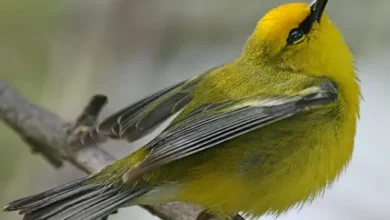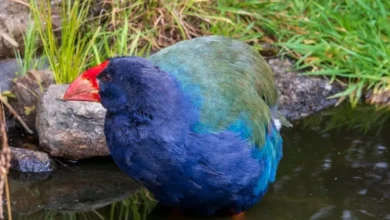Hawaiian Honeycreepers
A Comprehensive Exploration of Their Origin, Habitat, Diversity, and Extinction
Introduction:
The Hawaiian honeycreepers are a unique and fascinating group of birds that have captured the attention of scientists and bird enthusiasts alike. Endemic to the Hawaiian Islands, these birds are renowned for their vibrant colors, diverse adaptations, and specialized ecological roles. This article delves into the origins of the Hawaiian honeycreepers, their natural habitats, the reasons behind their remarkable diversity, and the unfortunate decline that has led to the extinction of many species within this group.
Origin and Evolution:
Hawaiian honeycreepers belong to the finch family Fringillidae and are closely related to the rosefinches. They are believed to have descended from a single ancestral species of cardueline finch that arrived in the Hawaiian Islands approximately three to four million years ago. This single colonizing species underwent extensive adaptive radiation, evolving into a wide variety of forms to exploit different ecological niches available in the islands. This evolutionary process resulted in a diverse array of species varying greatly in size, bill shape, and feeding habits.
Habitat and Distribution:
Hawaiian honeycreepers are exclusively found on the Hawaiian archipelago. Their habitats range from mostly dry forests to very wet tropical and semi-tropical climates spanning various elevations. While most species inhabit forested regions, some are adapted to live on smaller, treeless islets. Typically, they are associated with native forests dominated by ohia lehua (Metrosideros polymorpha) and koa trees, which are integral to their feeding and breeding habits.
The mountain habitats of Hawaiian honeycreepers, especially at elevations above 1,200 meters, offer protection from mosquito-borne diseases, as cooler temperatures and limited standing water reduce mosquito populations. These high-elevation areas have become critical refuges for the surviving species.
Physical Characteristics and Behavior:
The Hawaiian honeycreepers display an impressive variety of physical traits, particularly in the shape and size of their bills. This diversity is a direct adaptation to their specialized diets, which include nectar, insects, spiders, fruits, seeds, tree sap, and even carrion in some cases. For example, the Apapane (Himatione sanguinea) has a long, down-curved bill perfectly suited for feeding on nectar from flowering ohia trees, while other species have stout beaks for insect hunting or seed eating.
Most honeycreepers are small birds, measuring between 4 to 8 inches in length. Their vibrant plumage ranges across various shades of red, yellow, green, and orange, often contributing to their distinctiveness. Behaviorally, they are diurnal, breeding seasonally with monogamous pairs that establish territories averaging about 1 to 1.5 acres.
Reproduction:
Breeding typically occurs from May through July, although some species may breed outside this period. Nests are simple, cup-shaped structures made from grasses, twigs, lichens, and rootlets, usually placed on tree branches. Females incubate the young, while males support by feeding the incubating female and the offspring after hatching. Hatchlings are altricial, born naked and helpless, requiring extensive parental care.
Diversity Within the Group:
Among the notable species are:
-
Apapane (Himatione sanguinea): Bright crimson with black wings and tail, native to ohia lehua rainforests across Hawaii, Oahu, and Kauai.
-
‘Akiapōlā‘au: Known for its unique bill, part chisel and part a curved tip, used to pry insects out of bark.
-
Hawai’i Creeper and Hawai’i ‘Ākepa: Small, insectivorous honeycreepers endemic to Hawaii Island with declining populations.
Each species occupies a specific ecological niche, uniquely adapted to particular food sources and habitats, demonstrating the remarkable adaptive radiation of the group.
Decline and Extinction:
Despite their evolutionary success, Hawaiian honeycreepers have suffered dramatic declines due to several human-induced factors:
-
Habitat Destruction: Large-scale deforestation and land conversion for agriculture and urban development have decimated their native forests.
-
Invasive Species: Introduced predators such as rats, cats, and mongoose prey on eggs, chicks, and adults.
-
Disease: Mosquito-borne diseases like avian malaria and avian pox have been devastating, especially in lower elevation forests where mosquitoes thrive.
-
Climate Change: Altered weather patterns and increased temperatures extend the range of disease-carrying mosquitoes into previously safe high-elevation habitats.
-
Fragmentation: Isolated and shrinking populations lead to inbreeding and heightened vulnerability to environmental changes.
These pressures have led to the extinction of at least eight honeycreeper species in recent decades, including the Poouli and several species of the Kauai nukupuu and Maui nukupuu, with many others critically endangered.
Conservation Efforts:
Efforts to save the remaining honeycreepers focus on habitat protection and restoration, invasive species control, captive breeding programs, and disease management. Creating mosquito-free refuges at high elevations and reforestation with native plants are vital strategies. However, challenges remain significant due to the ongoing impacts of climate change and invasive species.
Conclusion:
The Hawaiian honeycreepers represent one of the most remarkable examples of evolutionary adaptation and diversification on Earth. Their vibrant presence once painted the forests of Hawaii with color and song, but today many face extinction. Understanding their history, ecology, and the threats they face is crucial for their conservation and the preservation of Hawaii’s unique natural heritage.




